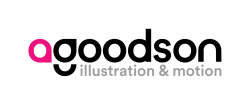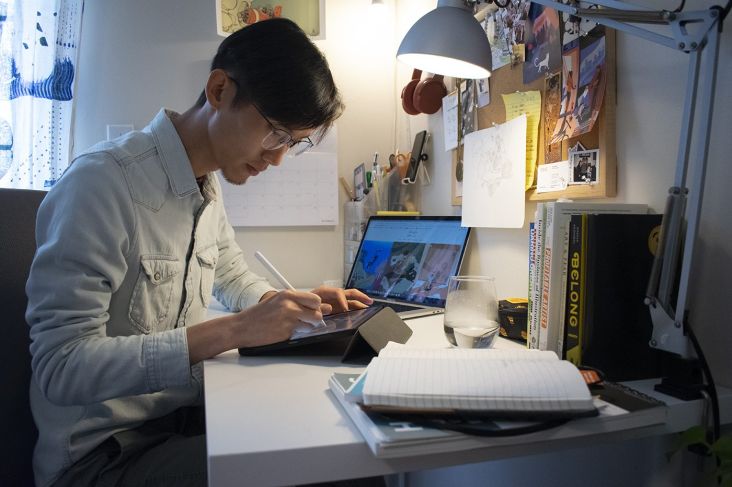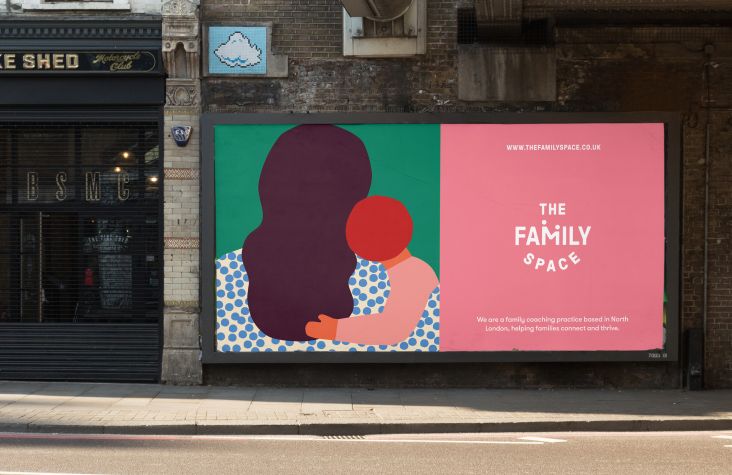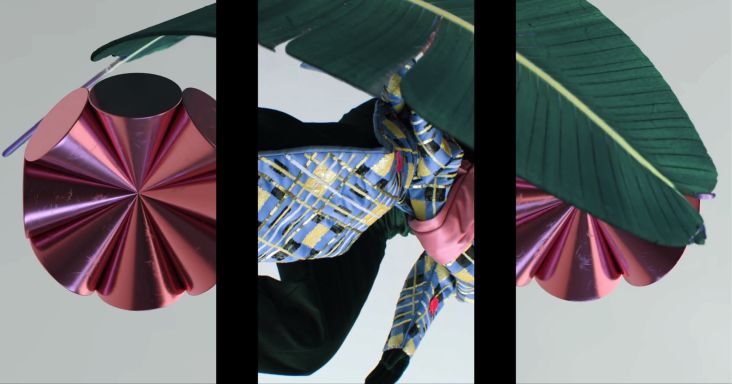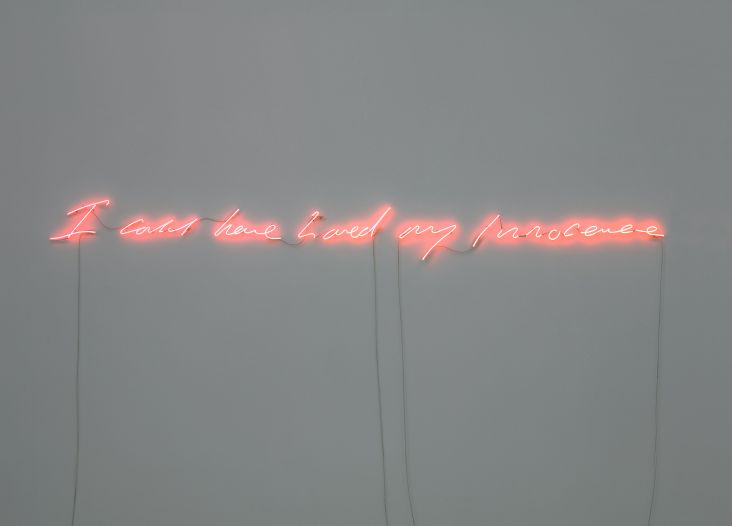The insider’s guide to becoming a professional illustrator
Are you hoping to become a professional illustrator but don't know how to get started? Anna Goodson, the founder of Anna Goodson Illustration & Motion, shares some insider tips and advice to help you get started.
](https://www.creativeboom.com/upload/articles/af/af4d07206f762fa288220c1f480fc6345e83bc8a_1280.jpg)
Image credit: Illustrator Hanna Melin/agoodson.com
Planning to leave your job and become a full-time, professional illustrator but feeling a little scared? Believe me; I can empathise. I’ve spent more than 23 years working as the owner of a global illustration agency. And so I know just how intimidating it can feel when you first launch your freelance career.
In this article, I’m going to share some of the benefits of my experience, and offer some insider tips to help you do it successfully.
1. Plan your escape
If you had unlimited private funds, then you could ditch your day job and start freelancing immediately. But for most of us, that’s not the case. So if you’re going to keep paying the rent and put food on the table, you have to plan your transition to full-time illustrator pretty carefully.
It’s hard to appreciate the value of a reliable income until it suddenly disappears. But that’s what will happen, so it’s important to have some savings to see you through to your first commissions.
Also bear in mind that, even when you get that work, the amount of time it takes to get paid can be a shock. You’ll often have to wait months after delivering your work to get a payment, and disorganised company bureaucracy sometimes holds things up even beyond that.
For these reasons, the best and safest way to transition from a day job to full-time freelance is... slowly.
Stick with your day job for the time being, and start freelancing during evenings, weekends and holidays. Build up a regular base of clients, and get a feel for how long it will take to get paid in practice. Do this for a few months, and you’ll be in a much better position to plan your first year of going it alone.
That’s going to mean a lot of extra work in the short term, and you’ll have to make sacrifices to essentially do two jobs at once. That seven-season Netflix drama everyone’s talking about is going to have to wait.
But on the plus side, if you’ve got the passion and commitment to see these months of double-working through, it’s a good sign that your move into freelance is ultimately going to be a successful one.
2. Organise your finances
Planning is not just about getting a steady flow of work; it’s also about getting your finances organised. By going freelance, you’re essentially setting up a business, so you need to make sure you’ve got a good handle on your money management before you leap.
The first thing to do is to set up a dedicated business bank account that’s separate from your bank account. This will help you keep track of your expenses, which will make completing your accounts a lot easier.
Once you’re up and running as a full-time freelancer, you’ll find that keeping track of invoices and late payments can also be a big challenge, potentially disrupting your cash flow and losing you a lot of money over time.
If you’re an organised person, you may be able to set up your personalised system of spreadsheets to management. But for most people, some decent accounting software is usually a wise investment.
3. Create a great portfolio
To put it bluntly, no one is going to hire you if they don’t know who you are, or what your style looks like. So the very first thing you need as a freelance illustrator is a killer portfolio, featuring your very best work.
Importantly, though, make sure this only includes the kind of work you want to do more of. For example, there’s no point in including amazing work in oils if you’re eager to move into using 3D software.
At the start of your career, creating this portfolio can be a bit of a chicken-and-egg problem: you haven’t done enough work to fill a portfolio, and you can’t get more work because you don’t have a great portfolio.
If that’s the case, then the answer starts creating your side projects. After all, potential clients are ultimately more interested in your illustration style than who you’ve been commissioned by.
4. Start promoting yourself
Of course, simply creating a portfolio is not enough: you need to get people to look at it. And the key to that in 2019 is promoting yourself via social media.
It’s good practice to work on your online presence a little every day. Right now, Instagram is going to be your main port of call, although do keep an eye on emerging social networks like Dayflash to see if you can find a niche there too.
Be consistent and post illustration work only: if you want to post selfies, holiday snaps and shots of your dinner, it’s best to have a separate account for friends and family.
The work you post on your dedicated illustration account, though, doesn’t have to be all finished, polished pieces. Often, initial sketches and work-in-progress can be a great way to get people engaged in your process online.
Finally, an often overlooked way of getting people to check out your work is to enter competitions. I highly recommend you enter as many free ones as you can because being able to describe yourself as a winner is an excellent promotional tool and a great way to build confidence in your abilities, both in clients and yourself.
5. Hustle!
While having a website and social media presence is a must these days, that probably won’t get you work by itself. You’ll also need to grasp the nettle and contact potential clients directly. You need, in short, to hustle.
So once you’ve settled on your illustration style and the type of markets you want to target, it’s time to start putting together a contact list of art directors, editors, designers, and anyone else who might be able to get you work or at least push you in the right direction.
Emails are easy to send, but also easy for people to ignore, so also consider sending out printed mailers, which are much more likely to get a reaction. Either way, do your research and make sure your message is addressed to the right person.
Be sure to personalise your message, to show that you know a little bit about the individual or company, and why they might be interested in your work. In contrast, a paragraph that’s blindly copy-and-pasted to dozens of random people is going to be instantly ignored.
Finally, start getting out of the house and meeting people directly. Go to exhibitions, shows, conferences and other events where creative people hang out. Start introducing yourself, making connections and building up a network. The more people you know in the business, the more likely you are to start finding work.
6. Keep things fresh
Whether or not you find these methods successful in winning you work, the most important thing is to keep people interested.
So update your website with new artwork as often as you can, and use that to drive people to look at it again. Post regularly to social media, and mix things up as much as possible to keep followers interested.
Follow up mailouts and emails with phone calls. Keep in regular touch with everyone you’ve exchanged business cards with, and keep those conversations going. Don’t harass people, but do show you’re keen and enthusiastic.
7. Expect rejection
There’s not an illustrator alive who hasn’t experienced rejection, and unfortunately, you’re unlikely to be any different. So you need to get used to being ignored and rebuffed: it simply goes with the territory.
Creative people can be sensitive about criticism, real or inferred, but in this competitive business, it’s important not to let it get to you. Instead, expect rejection, get used to it, ask for feedback where appropriate, and keep persevering until you get the breaks you need.
8. Get an agent
All the self-promotion techniques we’ve discussed in this article aren’t just useful for getting work directly. You can also potentially use them to get an agent to represent you, saving you all the hassle of self-promotion, chasing payments, dealing with legal issues, and more besides.
At Anna Goodson Illustration & Motion, we're established and know the industry inside-out. We've got the contacts, and we've got great relationships with them. We've built a reputation for being one of the best in the business, so people come to us when they're looking for illustrators or animators. What's more, we are a free service to our clients and only work on commission, so you have nothing to pay upfront.
Want to know more? I’m always approached by illustrators looking to be represented, and so my main tip here is to keep your email short and sweet.
Agents don’t want to read a detailed life story: they just want to get what you’re about in around 10-20 seconds, and then click on a link to your portfolio to check out your work. They also want to know you’ve researched the agency and are confident your style will fit in with the illustrators they represent.
Finally, know that any message that starts “Dear Sir/Madam” will instantly get deleted. The fact that my company is called “Anna Goodson Illustration & Motion” should be a pretty big clue to what my name is!
